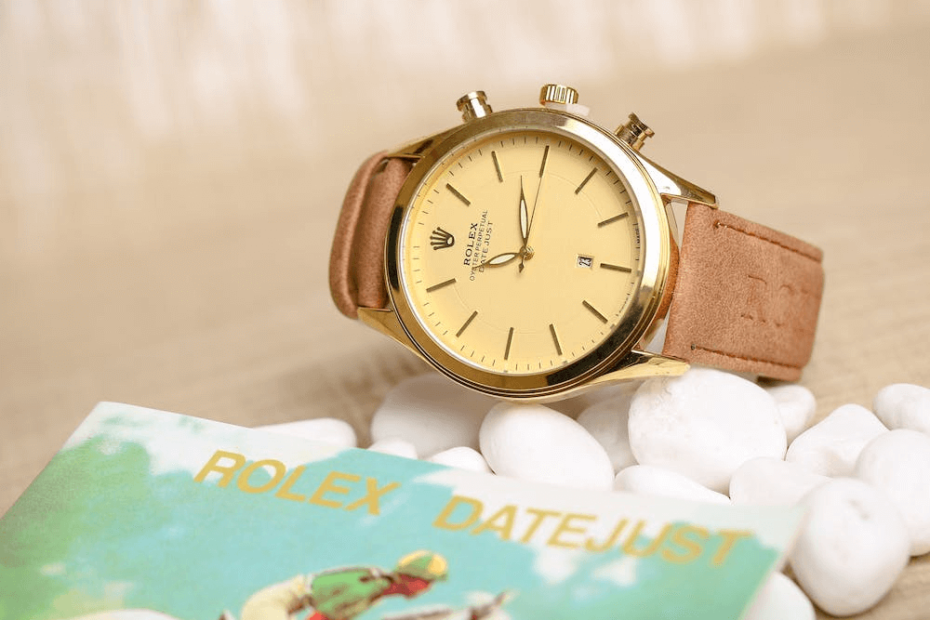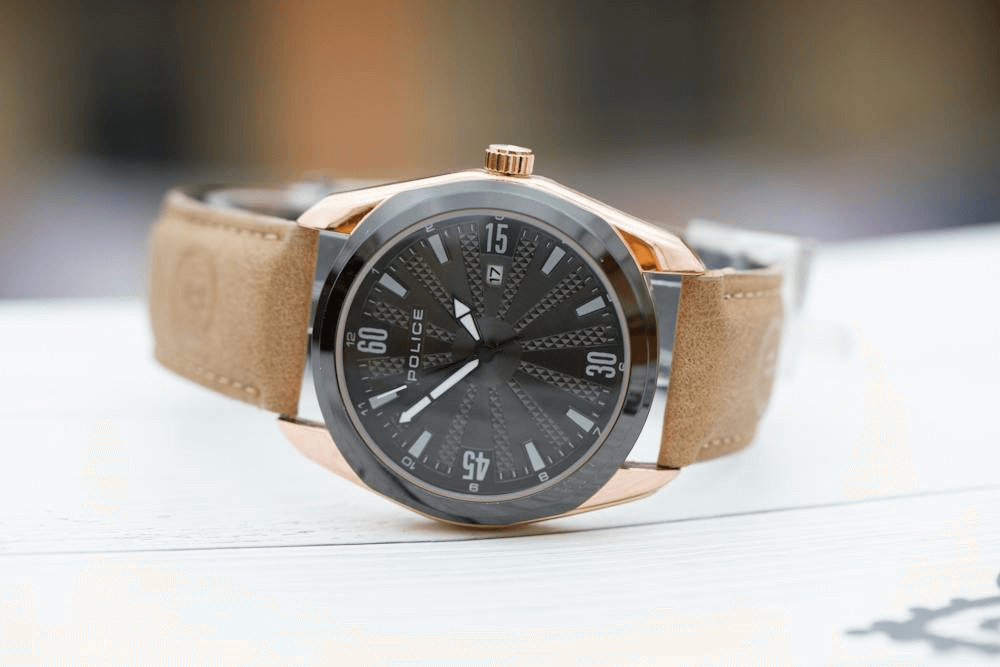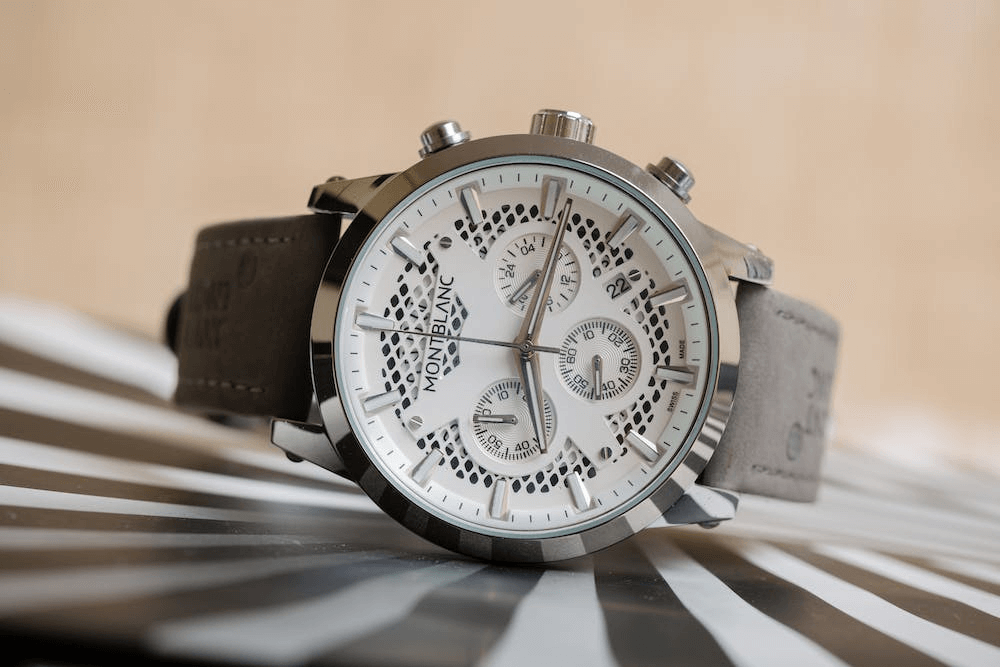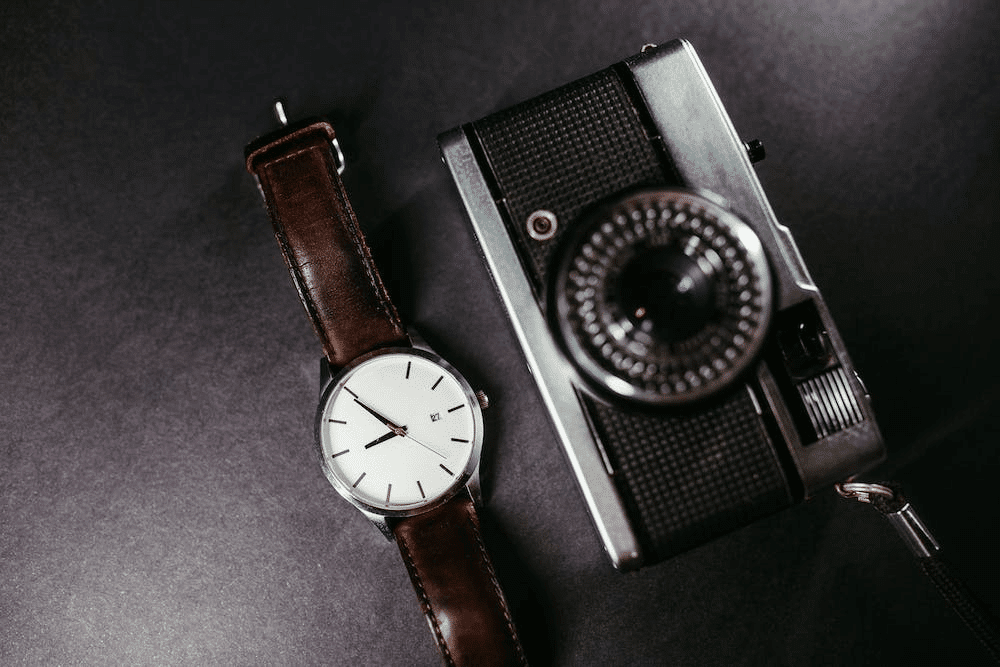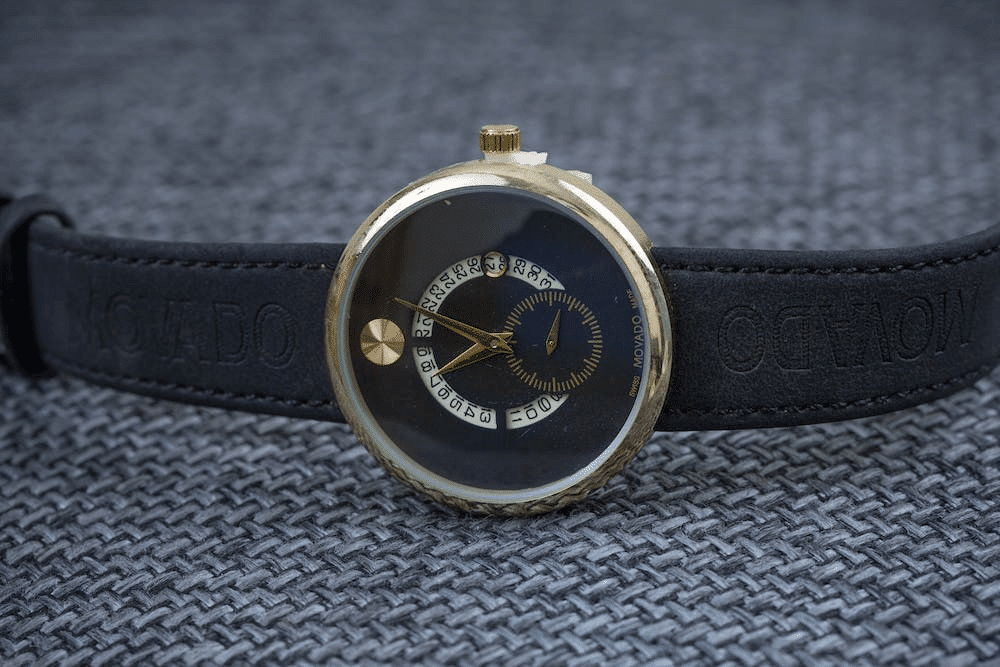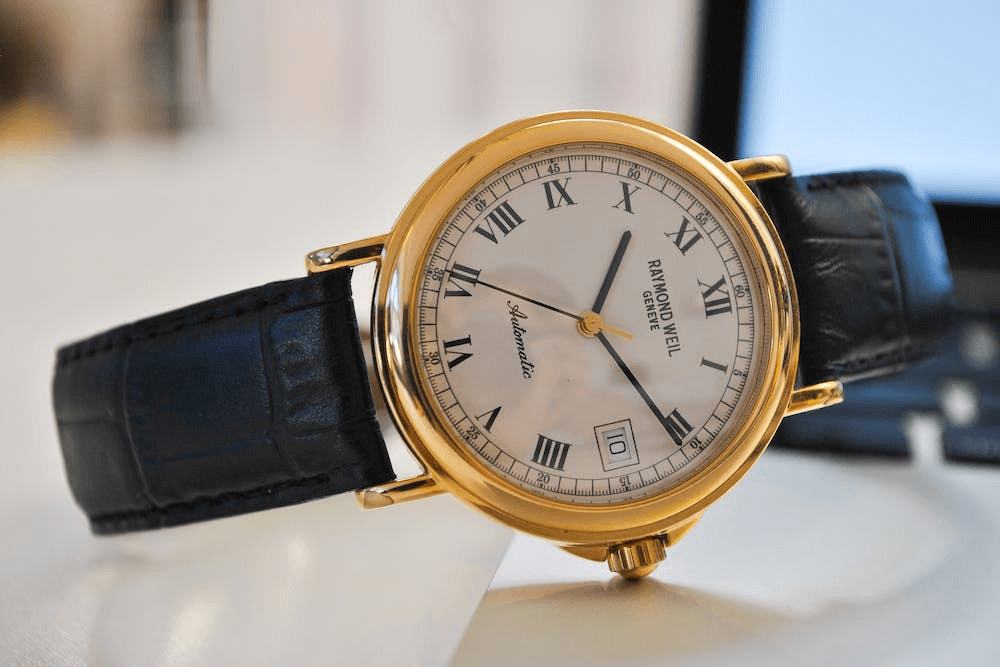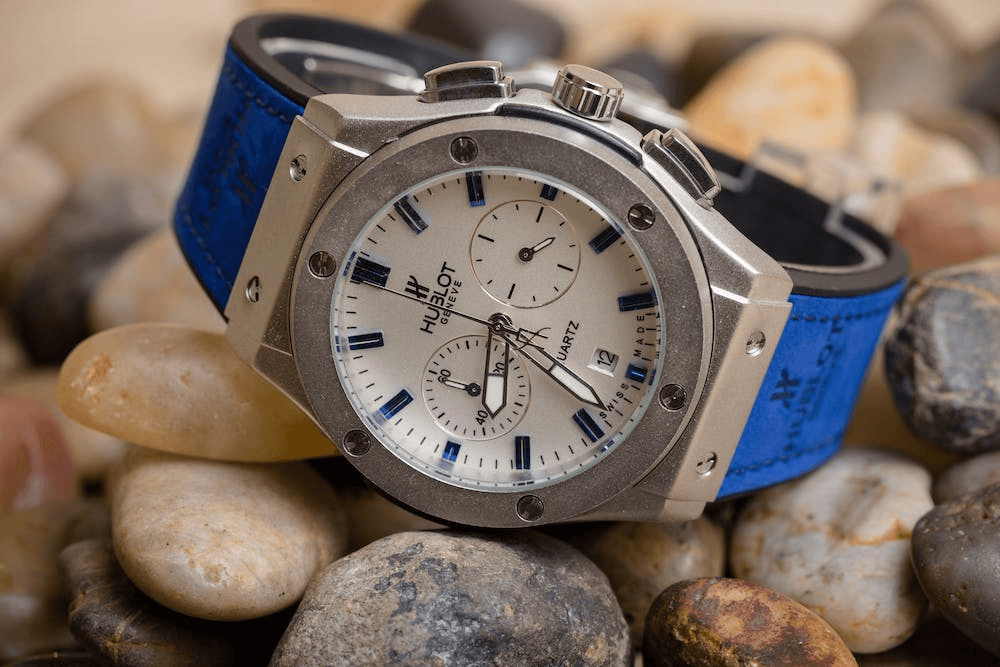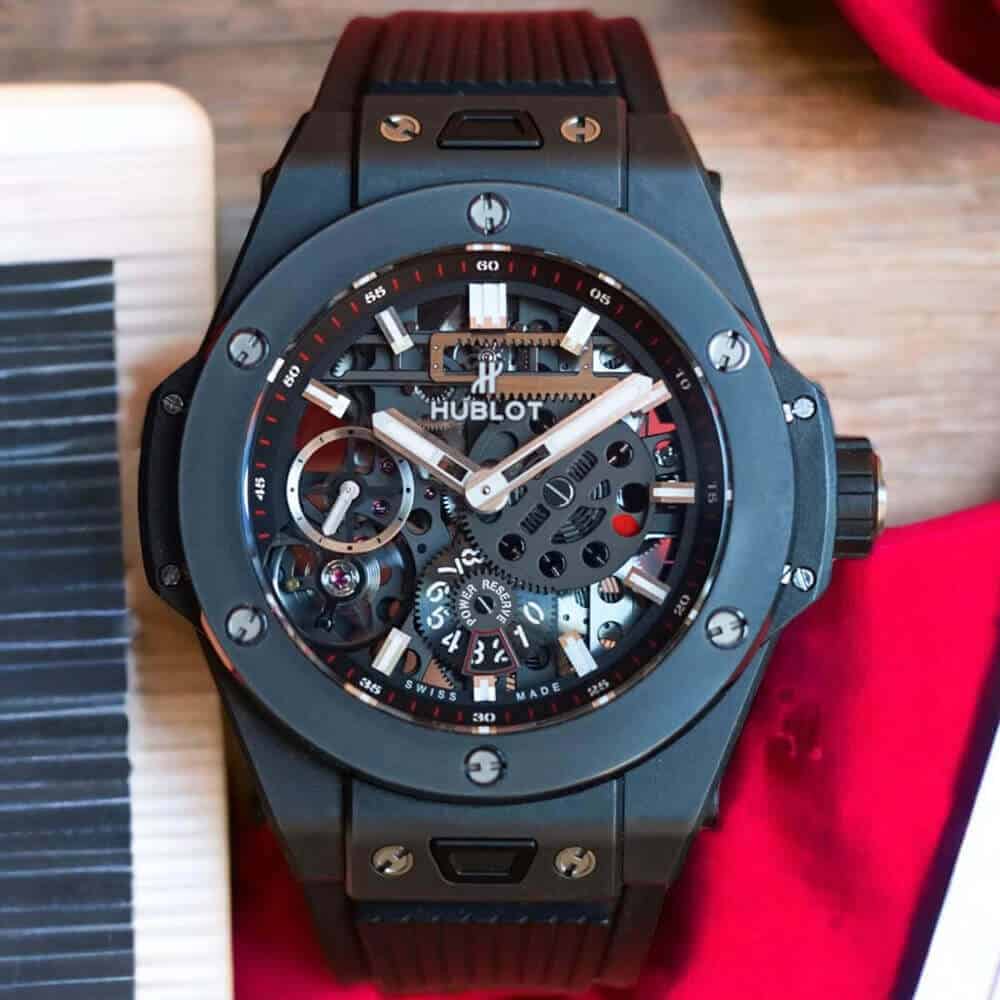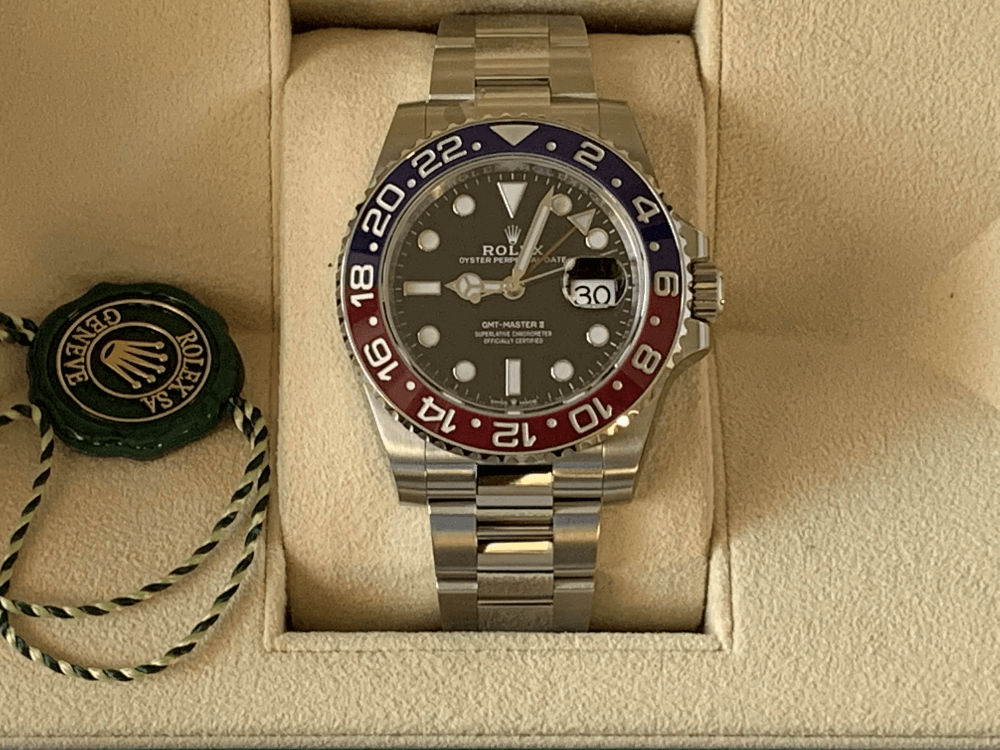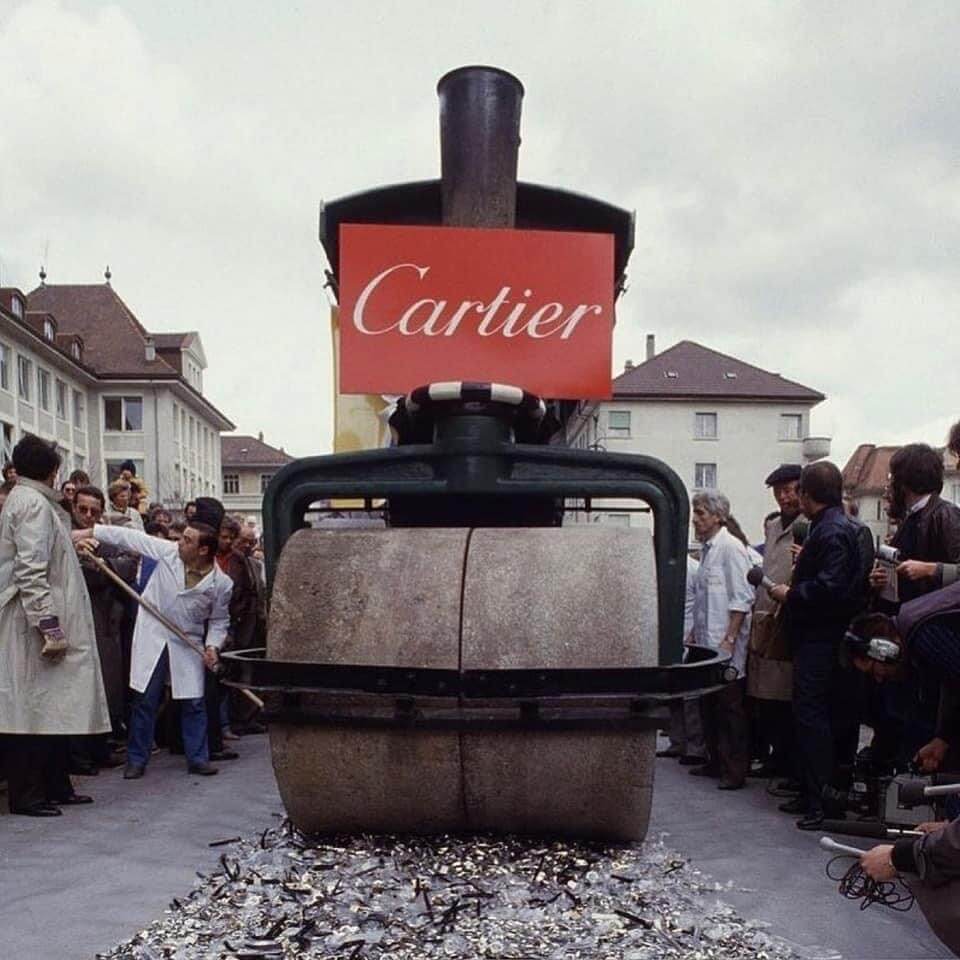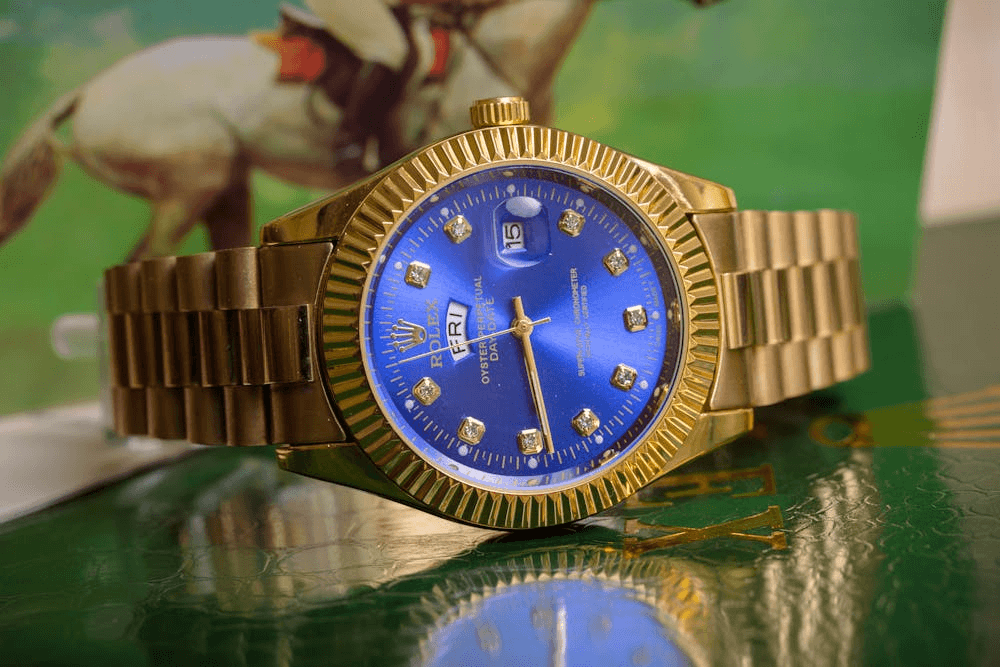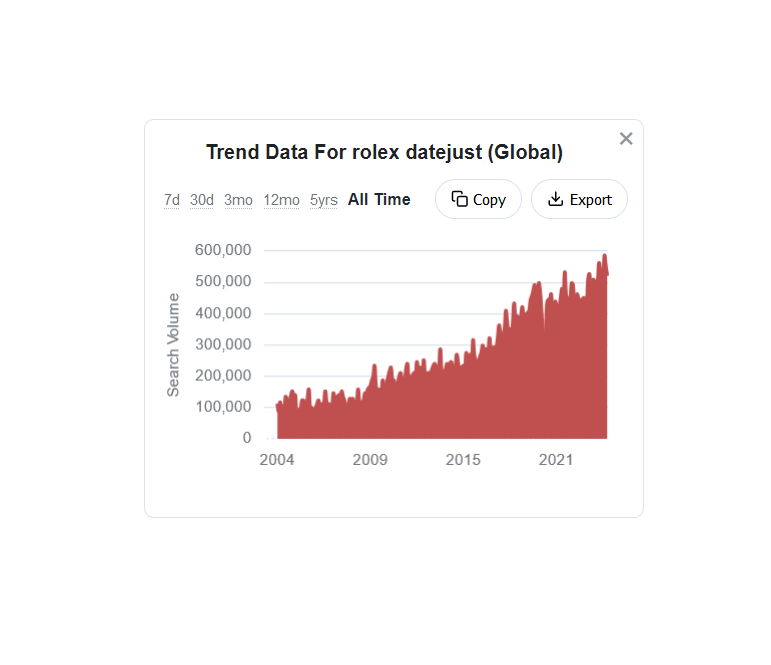📑 Table of Contents
- 1 History of Vintage Watches
- 2 Iconic Vintage Watch Brands and Models
- 3 The Craftsmanship Behind Vintage Watches
- 4 Trends in Vintage Watch Collecting
- 5 The Investment Value of Vintage Watches
- 6 Caring for Vintage Watches
- 7 The Cultural Impact of Vintage Watches
- 8 The Future of Vintage Watch Collecting
- 9 Final Thoughts!
Welcome to a journey through the timeless elegance of vintage watches, where every tick of the clock tells a story, and every watch on your wrist is a portal to a bygone era. Join me as we embark on a captivating exploration into the world of horology, where craftsmanship meets history, and the allure of vintage watches transcends time.
Vintage watches are more than mere timekeepers; they are storytellers of the past, embodying a blend of art, history, and mechanical ingenuity. These timepieces capture the essence of their era, reflecting technological advancements, design trends, and cultural shifts.
For collectors, each vintage watch is a treasure, offering a unique glimpse into a bygone era of craftsmanship.
History of Vintage Watches
- Transition from Pocket to Wrist Watches: The journey of the wristwatch began in the early 20th century. Initially, wristwatches were seen as a feminine accessory, with men predominantly using pocket watches. The first wristwatches were essentially pocket watches with straps attached, often custom-made for wealthy clients.
- Role in World War I: The outbreak of World War I played a crucial role in popularizing wristwatches among men. Trench warfare necessitated a more practical approach to timekeeping. Officers needed an easier way to check the time without the impracticality of a pocket watch. This need led to the widespread use of wristwatches by soldiers, making them a symbol of military efficiency and ruggedness. Read about the Top Flight Vintage Aviator Watches – WW2.
The Golden Age of Watchmaking
- Technological Advancements: The period between the 1920s and the 1960s is often referred to as the Golden Age of watchmaking. This era was marked by significant technological innovations, such as the development of the first waterproof watch by Rolex in 1926 and the creation of the first automatic wristwatch by Harwood in 1928.
- Art Deco Influence: The Art Deco movement had a profound impact on watch design during the 1920s and 1930s. Watches from this period featured geometric shapes, symmetry, and lavish decoration, reflecting the era’s broader artistic trends. Check watchmaker tools here.
The Post-War Era and Beyond
- The Rise of Luxury Brands: In the post-World War II era, luxury watch brands began to flourish. Companies like Patek Philippe, Audemars Piguet, and Vacheron Constantin became synonymous with high-end craftsmanship and exclusivity. This period also saw the rise of iconic models that combined technical prowess with aesthetic beauty.
- Innovation and Diversification: The 1950s and 1960s saw a diversification in watch styles and functions. This era introduced some of the most iconic sports watches, like the Rolex Submariner (1953) and the Omega Speedmaster (1957). These decades also witnessed the introduction of complication watches featuring chronographs, moon phases, and calendars.
Quartz Revolution
- Quartz Crisis: The 1970s marked a significant turning point in the watch industry with the advent of quartz technology. The Seiko Astron, introduced in 1969, was the world’s first quartz wristwatch, leading to what is known as the Quartz Crisis. This technology offered greater accuracy and lower production costs, dramatically impacting the traditional Swiss watch industry.
- Response and Revival: The Swiss watch industry responded to the quartz revolution by doubling down on mechanical watchmaking’s artistry and tradition. This led to a renewed interest in mechanical watches in the 1980s and 1990s, as they came to be appreciated more for their craftsmanship than just their functionality.
The Modern Vintage Movement
- Renaissance of Mechanical Watches: The late 20th and early 21st centuries saw a resurgence in the popularity of mechanical watches. This period marked a renewed appreciation for the art of traditional watchmaking, with vintage models and reissues becoming highly sought after by collectors.
- Continued Legacy and Innovation: Today, vintage watches are celebrated for their historical significance, craftsmanship, and the stories they carry. They represent a tangible link to the past and continue to inspire modern watchmaking with their timeless designs and mechanical ingenuity.
Iconic Vintage Watch Brands and Models
Rolex: A Synonym for Prestige:
- Submariner: Launched in 1953, the Rolex Submariner set the standard for dive watches, featuring a rotatable bezel and water resistance up to 100 meters initially, later increased. Its classic design and association with James Bond in films have made it an icon.
- Daytona: Designed for racing drivers, the Rolex Daytona gained cult status, particularly the models featuring the Paul Newman dial, characterized by their unique art deco style numerals and contrasting color schemes.
- GMT-Master: Introduced in 1954 for Pan American Airways pilots, the GMT-Master was innovative for its ability to display multiple time zones. The distinctively colored bezels, like the red and blue ‘Pepsi’ bezel, add to its allure.
Omega: Innovation and Exploration
- Speedmaster: Known as the ‘Moonwatch’ for its NASA-approved use in space missions, the Speedmaster, particularly the pre-moon models with the Calibre 321 movement, is a coveted piece among collectors.
- Seamaster: A diverse range of models characterizes the Seamaster line, from the elegant Seamaster DeVille to the robust Seamaster Professional, known for its wave-patterned dial and association with James Bond in the 1990s.
Patek Philippe: The Epitome of Luxury
- Calatrava: The Calatrava, introduced in 1932, is synonymous with understated elegance. Its simple, clean lines and signature hobnail bezel make it a paradigm of dress watches.
- Nautilus: Designed by Gérald Genta and released in 1976, the Nautilus broke traditional norms with its steel construction and unique porthole design. Its combination of luxury and sportiness makes it highly desirable.
Audemars Piguet: Breaking Conventions
- Royal Oak: Another creation of Gérald Genta, the Royal Oak was revolutionary when introduced in 1972. Its stainless steel construction, octagonal bezel, and integrated bracelet were groundbreaking, setting a new standard for luxury sports watches.
Cartier: Timeless Elegance
- Tank: First introduced in 1917, the Cartier Tank was inspired by the aerial view of a tank. Its rectangular case and distinctive Roman numerals exude elegance and have made it a favorite among various celebrities and royals. Check this- Cartier Tank automatic unisex watch 2302 stainless steel and 18k gold. I love this watch.
- Santos: Created in 1904 for aviator Alberto Santos-Dumont, the Santos is one of the earliest wristwatches. Its square case and visible screws on the bezel have made it an iconic piece. Check the details of the Cartier Santos automatic lady watch stainless steel and 18k gold 31mm.
Breitling: The Aviator’s Choice
- Navitimer: Introduced in 1952, the Breitling Navitimer, with its slide rule bezel, was designed for pilots. Its technical look and functionality have made it a mainstay among aviation enthusiasts. Read more about the Breitling Navitimer Chromatic chronograph men’s watch 11525/67.
Tag Heuer: Motorsport and Innovation
- Carrera: Launched in 1963, the Carrera was designed for professional drivers. Its clean, easy-to-read dial and robust movement have made it a classic in the world of sports chronographs.
- Monaco: Made famous by Steve McQueen in the movie ‘Le Mans,’ Monaco, introduced in 1969, was revolutionary with its square case and the first automatic chronograph movement.
The Craftsmanship Behind Vintage Watches
- Precision Engineering: The heart of a vintage watch is its mechanical movement. Unlike modern quartz watches, these movements are powered by a complex assembly of gears, springs, and levers, all meticulously calibrated. The precision and skill required to create these movements are immense, often involving hundreds of tiny, hand-assembled components.
- Iconic Movements: Certain movements have achieved legendary status due to their design and reliability. For example, the Valjoux 72, used in early Rolex Daytonas, is revered for its precision and durability. Omega’s Calibre 321, used in the original Speedmaster, is celebrated for its robustness and was the movement chosen by NASA for the Apollo missions. In case you need movement parts and tools, check them here.
Artistry in Design and Aesthetics
- Case and Dial Design: Vintage watch cases range from the elegant simplicity of the Patek Philippe Calatrava to the bold, rugged design of the Rolex Submariner. Dials also vary widely, from the minimalist two-handed dial of early Jaeger-LeCoultre timepieces to the complex chronograph faces of the Breitling Navitimer, featuring multiple sub-dials and scales.
- Use of Materials: Early vintage watches often featured cases made of precious metals like gold or platinum. Later, stainless steel became popular for its strength and durability. Dial materials also evolved, with early watches using enamel, which later gave way to more durable materials like lacquered brass.
The Art of Watchmaking
- Handcrafting Techniques: Vintage watches were predominantly handcrafted, with watchmakers spending hours assembling each piece. This meticulous process often involved the hand-finishing of components, a practice that is less common in today’s mass-produced watches.
- Decorative Techniques: High-end vintage watches often feature decorative techniques like guilloché on the dial, a precise, intricate pattern engraved into the metal, or Côtes de Genève, a type of decoration on watch movements resembling waves, visible through a transparent back.
Complications and Innovations
- Introduction of Complications: Complications in watchmaking refer to any feature beyond simple timekeeping. Vintage watches introduced groundbreaking complications like chronographs, perpetual calendars, and moon phase indicators. These not only added functionality but also complexity and value to the watches.
- Water Resistance and Shock Absorption: The quest for durability led to innovations like the Oyster case by Rolex, providing increased water resistance. Similarly, developments in shock absorption techniques helped protect the delicate internal mechanisms from the rigors of daily wear.
Restoration and Preservation
- Restoration Ethics: Restoring a vintage watch is a delicate balance between preserving its original character and ensuring its functionality. Watchmakers must often decide whether to replace worn parts or maintain the original components, a decision that can significantly impact the watch’s value and historical integrity.
- Skill and Expertise: Restoration requires a deep understanding of the watch’s history and mechanics. Skilled watchmakers use traditional techniques, sometimes fabricating replacement parts by hand, to maintain the watch’s authenticity.
Read our in-depth guide about restoration on vintage watches.
Trends in Vintage Watch Collecting
Rise of the Vintage Market:
- Growing Popularity: In recent years, there’s been a significant surge in interest in vintage watches. This trend is driven by a desire for unique pieces with historical significance, as well as an appreciation for classic design and mechanical craftsmanship.
- Diverse Collector Base: The community of vintage watch collectors has become increasingly varied, including seasoned collectors, fashion enthusiasts, history buffs, and younger generations attracted by the unique blend of story, style, and technology that these watches offer. Here are some tips for collectors.
Key Collecting Trends
- Sports Watches Gain Prominence: Robust sports watches like the Rolex Submariner, Omega Speedmaster, and Audemars Piguet Royal Oak have seen a spike in popularity. Collectors value these models for their blend of functionality, durability, and timeless design.
- Rarity and Provenance: Watches with a limited production run, unique history, or celebrity association command higher interest and value. Collectors often seek pieces with a story, whether it’s a famous previous owner or a significant historical context.
Impact of Digital Platforms
- Online Marketplaces and Forums: Platforms like Chrono24, eBay, and various watch forums have democratized access to vintage watches. Collectors can easily find, compare, and purchase watches from around the world, which was not possible a few decades ago.
- Social Media Influence: Instagram and other social media platforms have become crucial in shaping trends and creating communities. Collectors and enthusiasts share their collections, stories, and knowledge, contributing to a more informed and engaged collector base.
Shifts in Collector Preferences
- Interest in Underappreciated Brands and Models: There’s a growing interest in discovering underrated or lesser-known brands and models, as collectors seek to differentiate their collections with unique pieces.
- Preservation Over Restoration: Collectors are increasingly favoring original condition and patina over-restored pieces. There’s a greater appreciation for the authenticity and history that comes with an untouched, well-aged watch.
The Role of Auction Houses
- Record-Breaking Sales: High-profile auctions have played a significant role in highlighting the value of vintage watches. Notable sales at auction houses like Sotheby’s and Christie’s often garner media attention and influence market trends.
- Expertise and Authentication: Auction houses also offer expertise and authentication services, providing collectors with confidence in the provenance and condition of high-value watches.
The Future of Collecting
- Sustainable and Ethical Collecting: There’s an emerging trend towards more sustainable and ethical collecting practices. Collectors are showing interest in brands with a history of sustainable manufacturing and ethical sourcing of materials.
- Technological Integration: Technology plays an increasing role in collecting, from digital platforms for buying and selling to the use of blockchain for authentication and provenance tracking.
The Investment Value of Vintage Watches
- Vintage Watches as Investments: In recent years, vintage watches have emerged as a significant form of alternative investment. Collectors and investors alike are recognizing the potential for substantial returns, akin to art or vintage cars.
- Long-term Appreciation: Many vintage watches, particularly from prestigious brands or with historical significance, have shown a consistent increase in value over the years. This appreciation is driven by their rarity, demand, and the finite nature of these timepieces.
Factors Influencing Value
- Brand and Model Prestige: Certain brands and models, like Rolex, Patek Philippe, and Audemars Piguet, have a storied history and a reputation for quality, which significantly influences their value. Iconic models like the Rolex Daytona or Patek Philippe Nautilus are especially prized.
- Rarity and Exclusivity: Limited edition models, or watches with a limited production run, are highly sought after. The fewer pieces available, the more desirable and valuable they become.
- Historical Significance: Watches with a rich history, such as those associated with historical events or owned by notable figures, often command higher prices. The story behind the watch can be as valuable as the watch itself.
- Condition and Originality: The state of the watch plays a crucial role in its value. Watches in mint condition, especially those with original parts and undisturbed patina, are more valuable. Restorations, especially if not done professionally, can diminish a watch’s value.
Market Trends and High-Profile Sales
- Auction Records: The vintage watch market has seen some record-breaking sales in recent years. The 2017 sale of a Paul Newman Rolex Daytona for $17.8 million is a prime example of the investment potential of these timepieces.
- Emerging Markets: New markets are emerging, particularly in Asia and the Middle East, where there’s growing interest in collecting and investing in vintage watches.
Investment Strategies
- Diversification and Research: Successful investing in vintage watches often involves diversification and thorough research. Understanding the market, the specific models and their history is crucial.
- Consultation with Experts: Consulting with watch experts and appraisers can provide valuable insights into a watch’s authenticity, condition, and potential value.
The Role of Digital Platforms
- Online Valuation Tools: The rise of digital platforms offering valuation tools and market analysis has made it easier for collectors and investors to gauge the market and make informed decisions.
- Global Access to Market: Online auction sites and marketplaces have opened up global access to rare and valuable watches, providing investors with a wider range of options.
Caring for Vintage Watches
- Routine Servicing: Vintage watches require regular servicing to ensure their mechanisms continue to function accurately. This typically involves cleaning, oiling, and calibrating the movement, which should be done every 3 to 5 years by a professional.
- Avoiding Damage: Due to their age and the delicacy of their components, vintage watches are more susceptible to damage. It’s crucial to protect them from extreme conditions such as water exposure (unless specifically water-resistant), extreme temperatures, and physical shocks.
Best Practices for Storage and Handling
- Proper Storage: When not being worn, vintage watches should be stored in a dry, temperature-controlled environment. Using a watch box or a safe with a soft, non-abrasive lining can prevent scratches and other physical damage.
- Handling with Care: Handling a vintage watch requires care to avoid unnecessary stress on its components. It’s important to wind mechanical watches regularly, but with gentle, measured turns of the crown to avoid overwinding.
Restoration Considerations
- Preserving Authenticity: When restoring a vintage watch, maintaining its originality is often more valuable than replacing old parts with new ones. Collectors typically value original dials, hands, and cases, even if they show signs of age.
- Choosing the Right Expert: Restoration should be entrusted to a skilled watchmaker familiar with the specific brand and model. The right expert can preserve the watch’s value while ensuring its functionality.
The Debate Over Patina
- Value of Patina: The patina that develops on a watch – the natural aging of materials like the dial or the hands – is often considered a desirable feature. It adds character and individuality to the watch, telling a story of its history. Read more about Vintage Rolex – Patina or No Patina.
- Cleaning vs. Preserving: There’s a debate among collectors about whether to clean off the patina or preserve it. The decision often depends on the extent of the aging and the individual collector’s preference for originality versus aesthetics. While talking about cleaning or preserving, you need to check this out.
Avoiding Common Mistakes
- DIY Repairs: Attempting to repair or service a vintage watch without proper skills can lead to irreversible damage. It’s always recommended to seek professional assistance for any repairs.
- Magnetization: Vintage watches can be sensitive to magnetization, which affects their accuracy. Keeping them away from electronic devices and other magnetic sources is essential.
Insurance and Documentation
- Insuring Your Collection: Given the value of vintage watches, insuring them against theft, loss, or damage is a prudent step. Accurate valuation and documentation are crucial for this process.
- Keeping Records: Maintaining detailed records of servicing, repairs, and any restoration work, along with provenance and original documents, is important for both personal reference and potential future resale.
The Cultural Impact of Vintage Watches
Symbolism in Fashion and Personal Style:
- Fashion Statements: Vintage watches have long been more than time-telling devices; they are statements of personal style and taste. The choice of a vintage watch often reflects the wearer’s appreciation for history, craftsmanship, and a classic sense of style. Watches like the Cartier Tank or the Rolex Daytona have become synonymous with elegance and sophistication.
- Influence on Modern Design: The aesthetic appeal of vintage watches has influenced contemporary watch design. Many modern watches pay homage to classic vintage styles, either through reissues or by incorporating elements like retro fonts, colors, and case shapes.
Vintage Watches in Cinema and Pop Culture
- Iconic Movie Timepieces: Vintage watches have had memorable roles in films, often becoming as iconic as the characters who wore them. Sean Connery’s Rolex Submariner in the James Bond films and Steve McQueen’s Heuer Monaco in “Le Mans” are prime examples. These timepieces have contributed to character development and the movie’s style narrative.
- Celebrity Associations: Watches worn by celebrities, both on and off-screen, often gain cult status. The Paul Newman Rolex Daytona is a case in point, skyrocketing in value and desirability due to its association with the actor and race car driver.
Representations in Literature and Art
- Literary Timepieces: In literature, watches often symbolize more than the passage of time. They can represent wealth, social status, or the personality of a character. F. Scott Fitzgerald and Ian Fleming, for instance, used timepieces in their works to add depth to their characters.
- Watches in Art: Various artists have used watches in their work to convey messages about time, mortality, and beauty. Salvador Dali’s painting “The Persistence of Memory” with its melting clocks is a famous example, though it’s more abstract in its reference to time and less about specific timepieces.
Social Status and Collectibility
- Status Symbols: Throughout history, vintage watches have been status symbols. Owning a high-end vintage watch, such as a Patek Philippe or a Rolex, often denotes a level of success and a refined taste.
- Collectibility and Communities: The collectibility of vintage watches has fostered a robust community of enthusiasts and collectors. Forums, clubs, and social media groups dedicated to vintage watch collecting have become spaces for sharing knowledge, trading, and celebrating the art of watchmaking.
Vintage Watches as Heirlooms
- Passing Down History: Vintage watches are often treasured family heirlooms, passed down through generations. They carry personal histories and memories, making them invaluable to their owners.
- Preservation of Craftsmanship: By passing these watches down, families are not just preserving a physical object but also the artistry and history of watchmaking.
Impact on Modern Watchmaking
- Inspiration for New Creations: Contemporary watchmakers often draw inspiration from vintage designs, acknowledging their timeless appeal. This trend has led to the resurgence of classic features in modern watches, blending traditional aesthetics with contemporary technology.
- Educational Value: Vintage watches serve as educational pieces for watchmakers and enthusiasts, illustrating the evolution of technology and design in horology.
The Future of Vintage Watch Collecting
Technological Advancements and Digital Integration
- Online Platforms and Marketplaces: The rise of digital platforms has transformed how vintage watches are collected and traded. Websites and apps provide global access to a vast array of timepieces, making it easier for collectors to find rare and sought-after models.
- Blockchain and Authentication: The use of blockchain technology in the authentication process is gaining traction. It offers a secure and transparent way to verify the history and authenticity of a watch, which is crucial in a market where provenance and originality are paramount.
Evolving Collector Demographics and Tastes
- Younger Generations of Collectors: There’s a growing interest in vintage watches among younger collectors. Drawn by the unique history, craftsmanship, and storytelling aspect of these timepieces, they are likely to influence future trends and market dynamics.
- Shift in Collecting Patterns: While traditional luxury brands remain popular, there’s a noticeable shift towards underappreciated and niche models. Collectors are increasingly valuing unique design and historical significance over brand prestige alone.
Sustainability and Ethical Collecting
- Eco-conscious Collecting: The sustainability movement is influencing the world of vintage watch collecting. Collectors and enthusiasts are becoming more conscious of the environmental and ethical implications of their hobbies, favoring brands and practices that align with these values.
- Preservation and Restoration Ethics: There’s a growing emphasis on preserving the original state of vintage watches and ethical restoration practices. This trend is driven by a desire to maintain historical integrity and reduce the environmental impact of manufacturing new parts.
Impact of Global Economic and Cultural Trends
- Economic Fluctuations: The state of the global economy significantly impacts the collectibles market, including vintage watches. Economic downturns can affect spending on luxury items, while periods of prosperity often see a surge in collecting and investment.
- Cultural Shifts: Changes in cultural trends and attitudes can influence the types of watches that are collected. For instance, a rise in interest in a particular historical period or style can lead to increased demand for watches from that era.
The Role of Communities and Social Media
- Online Communities and Forums: The internet has facilitated the growth of vibrant communities where collectors can share knowledge, trade watches, and discuss their passions. These communities are likely to continue to play a crucial role in the hobby.
- Social Media Influence: Platforms like Instagram and YouTube have become essential in shaping trends and educating new collectors. Influencers and watch enthusiasts use these platforms to showcase their collections, tell stories, and offer advice, thus attracting more people to the world of vintage watch collecting.
Final Thoughts!
The realm of vintage watches is a remarkable blend of art, history, and mechanical mastery, transcending the simple task of timekeeping to become a symbol of heritage, craftsmanship, and timeless elegance. These timepieces are not mere relics of the past; they are living histories that continue to tell stories, evoke emotions, and inspire awe.
From the intricate craftsmanship of their mechanisms to the unique stories behind each model and brand, vintage watches represent a legacy of human ingenuity and aesthetic refinement. They are a testament to the skill and dedication of watchmakers who, over the decades, have turned practical instruments into objects of desire and admiration.
The trends in collecting, the surge in investment value, and the evolving tastes in the vintage watch market reflect a dynamic and passionate community. Collectors and enthusiasts, driven by a shared love for these mechanical wonders, are not just preserving timepieces but are keeping alive the art and tradition of watchmaking.
As we look to the future, the world of vintage watch collecting continues to evolve, embracing new technologies and adapting to changing tastes while staying true to the essence of horology. It remains an evergreen pursuit, offering something for everyone – from the seasoned collector to the budding enthusiast, from the investor to the fashion-conscious individual.
In conclusion, the allure of vintage watches lies not just in their ability to mark time but in their power to connect us to different eras, to stories of innovation and excellence, and to a community of like-minded individuals who appreciate the finer things in life. They remind us that at the heart of every ticking hand and every aging dial lies a piece of history, a work of art, and a timeless conversation between the past and the present.
